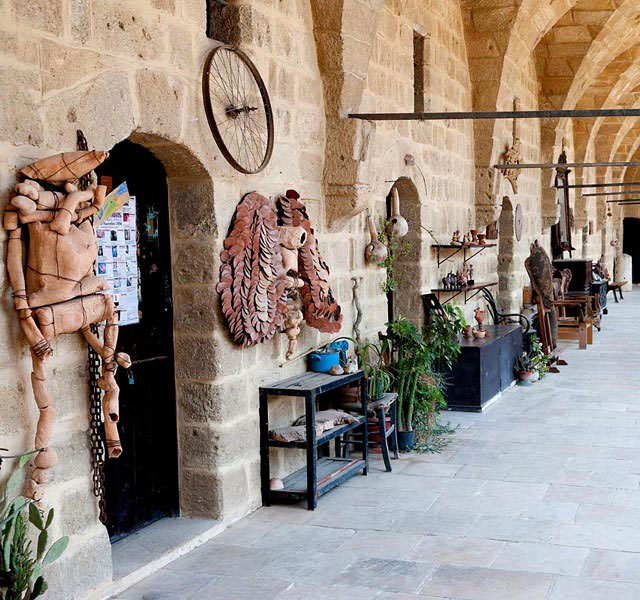The gothic style abbey of Bellapais, built long before there was a surrounding village, has attracted visitors since the middle ages. They came as pilgrims seeking solace or forgiveness of sins; they came as followers of the arts when the Lusignan kings of Cyprus promoted the joys of poetry, music and literature; they came as artists in search of the perfect subject to paint and they came as writers to extol the many virtues of this incredibly tranquil building. It was in the late 12 th century when the mighty Saladin conquered Jerusalem and evicted the Augustinian friars. With the blessing of Aimery Lusignan (ruled 1194-1205), the monastic order came and settled in Cyprus. They searched for an ideal spot upon which to build a new abbey home and settled on a ridge in the foothills of the mountains above Kyrenia. They called their abbey “Our Blessed Lady of the Mountains”. There have been other names used during the ensuing centuries, including “L’Abbaye Blanche” (The White Abbey, so named after the White Cannons of S St. Norbert), and the “Abbaye de la Paix” from which came the Venetian corruption of Bellapaise. The abbey accrued great riches from the pilgrims that came to visit and pray for intercession through the auspices of the holy relics it had been endowed with. These included a piece of the True Cross that was given by a French knight returning from the crusades. However with wealth and success came pride and licentiousness and the abbey fell into disrepute so much so that by the time of the Genoese invasion and looting of the abbey treasures in the 14 th century there was little left of a functioning religious community. What does remain is one of the most beautiful Lusignan period buildings on the island. A walk through the whole of the abbey complex should not be hurried, it should be done at leisure allowing time to soak up the atmosphere, to pause in the cloisters and imagine the sight and sound of monks as they gently walked to prayers in the church or to meals in the great hall. Enter the Chapter House and examine the fancifully carved corbels that once supported the rib vaulting. Climb the well-worn stone steps that lead to the roof of the cloisters and gaze out across the blue Mediterranean. Sit inside the refectory or great hall and listen for the voice of the lone monk whose job it was at every meal time to read from the scriptures as his fellow brothers ate in silence. Beneath the refectory is the undercroft, a magnificent, cool storage area where the abbey victuals would have been stored and issued to the kitchens. The abbey church once Catholic, was handed over to the Orthodox Christians of Cyprus after the Ottoman conquest and since 1974 is no longer used for worship, it is now an icon museum. The whole site is looked after and administered by the TRNC Antiquities Department.














